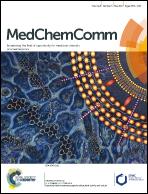Upconversion fluorescent and X-ray-sensitive bifunctional nanoprobes for assessing the penetrability of inorganic nanoparticles in the digestive system†‡
Abstract
Nanotechnology is receiving increasing attention due to its fantastic advantages and potential applications in nanofood and nanomedicine. However, the safety of touching manufactured nanoparticles is still uncertain for human beings. Here, we track inorganic nanoparticles in the digestive system of the mouse through upconversion fluorescence and X-ray imaging, and try to demonstrate whether or not the inorganic nanoparticles will penetrate the digestive system to enter the blood system. Lanthanide-doped upconversion nanoparticles, which can convert infrared light to visible light and are simultaneously sensitive to X-rays, were selected as model inorganic nanoparticles. The investigation clarifies that even the ultrathin nanoparticles (∼5 nm) could not penetrate the digestive tract to enter the bloodstream or surrounding tissues, but were gradually excreted out. Our results help assess the safety of inorganic nanoparticles potentially used in nanofood and nanomedicine.



 Please wait while we load your content...
Please wait while we load your content...